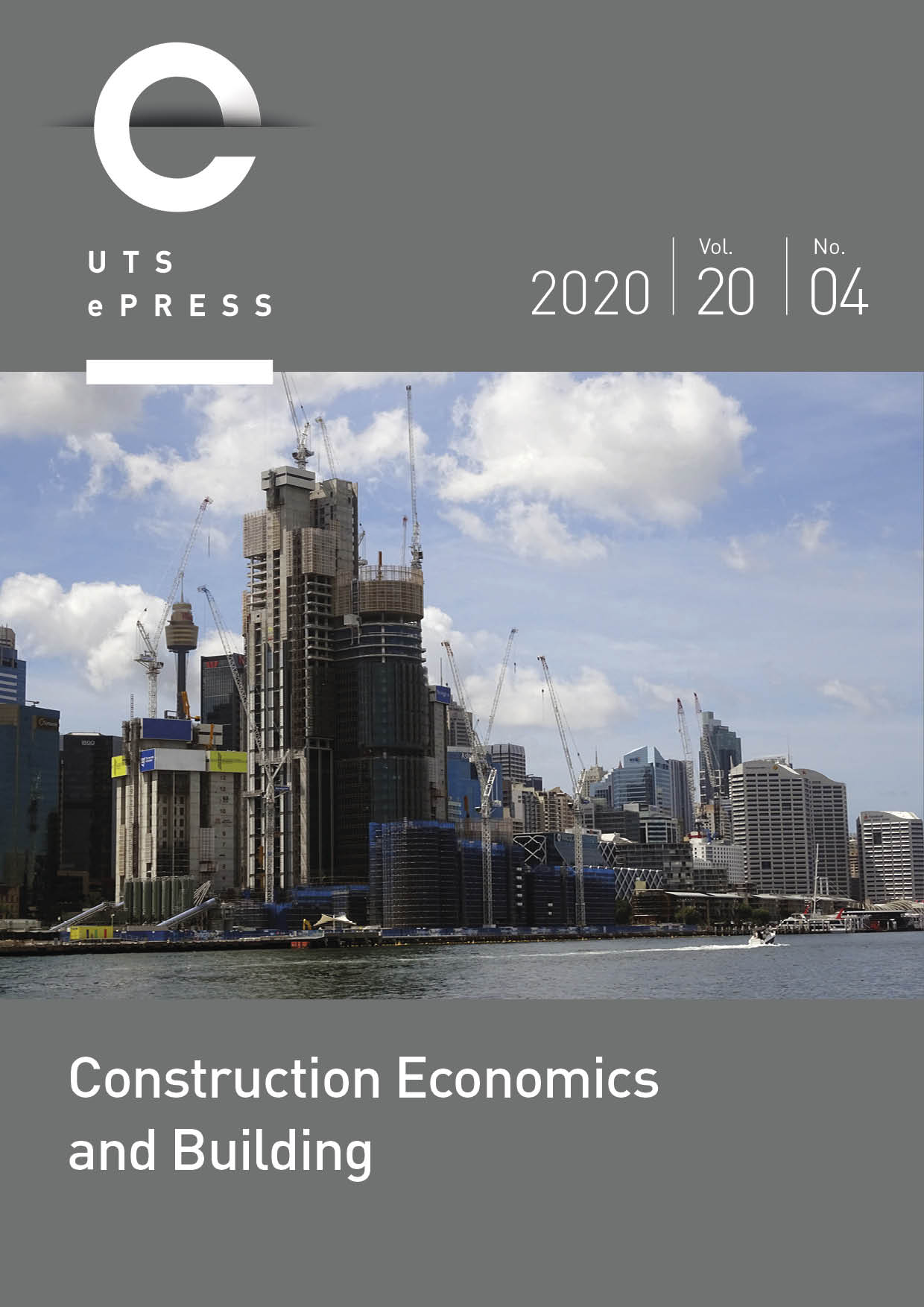Barriers to reusing and recycling office fit-out: an exploratory analysis of demolition processes and product features
Main Article Content
Abstract
Within the highly waste-generative context of Australia, waste from demolition of office fit-out significantly contributes to unsustainable landfilling. The extant literature is, however, slim on scrutiny of the situation. Therefore, this study aims to uncover office fit-out demolition processes and product features that drive high ratio of landfilling fit-out elements. The research used ten case projects and fourteen interviews to document visible and latent parameters of office fit-out waste. Waste-stream mapping and decision-tree techniques, in conjunction with basic descriptive statistics, were used to model and visualize the extent and drivers of unsustainable fit-out demolition. Further, an exemplar product features analysis was conducted to validate the identified drivers. The findings show that 78% of fit-out waste from the studied cases is landfilled. This high rate is attributed to both latent and visible factors. The main latent factor is high lease price of premium or high-quality offices which favours expeditious demolition with low consideration for reuse and recycling. Key technically visible barriers are volumetric furniture, heterogeneous fit-out assemblies, and insufficient critical mass. To move away from landfilling, production of office fit-out should be transformed for sustainable material adequacy, product re-configurability and de-constructability, and easy handling in the use phase.
Article Details
Section
Authors who publish with this journal agree to the following terms:
a) Authors retain copyright and grant the journal right of first publication with the work simultaneously licensed under a Creative Commons Attribution License that allows others to share and adapt the work with an acknowledgement of the work's authorship and initial publication in this journal.
b) Authors are able to enter into separate, additional contractual arrangements for the non-exclusive distribution of the journal's published version of the work (e.g., post it to an institutional repository or publish it in a book), with an acknowledgement of its initial publication in this journal.
c) Authors are permitted and encouraged to post their work online (e.g., in institutional repositories or on their website) prior to and during the submission process, as it can lead to productive exchanges, as well as earlier and greater citation of published work (See The Open Access Citation Advantage Service). Where authors include such a work in an institutional repository or on their website (ie. a copy of a work which has been published in a UTS ePRESS journal, or a pre-print or post-print version of that work), we request that they include a statement that acknowledges the UTS ePRESS publication including the name of the journal, the volume number and a web-link to the journal item.
d) Authors should be aware that the Creative Commons Attribution (CC-BY) License permits readers to share (copy and redistribute the work in any medium or format) and adapt (remix, transform, and build upon the work) for any purpose, even commercially, provided they also give appropriate credit to the work, provide a link to the license, and indicate if changes were made. They may do these things in any reasonable manner, but not in any way that suggests you or your publisher endorses their use.
